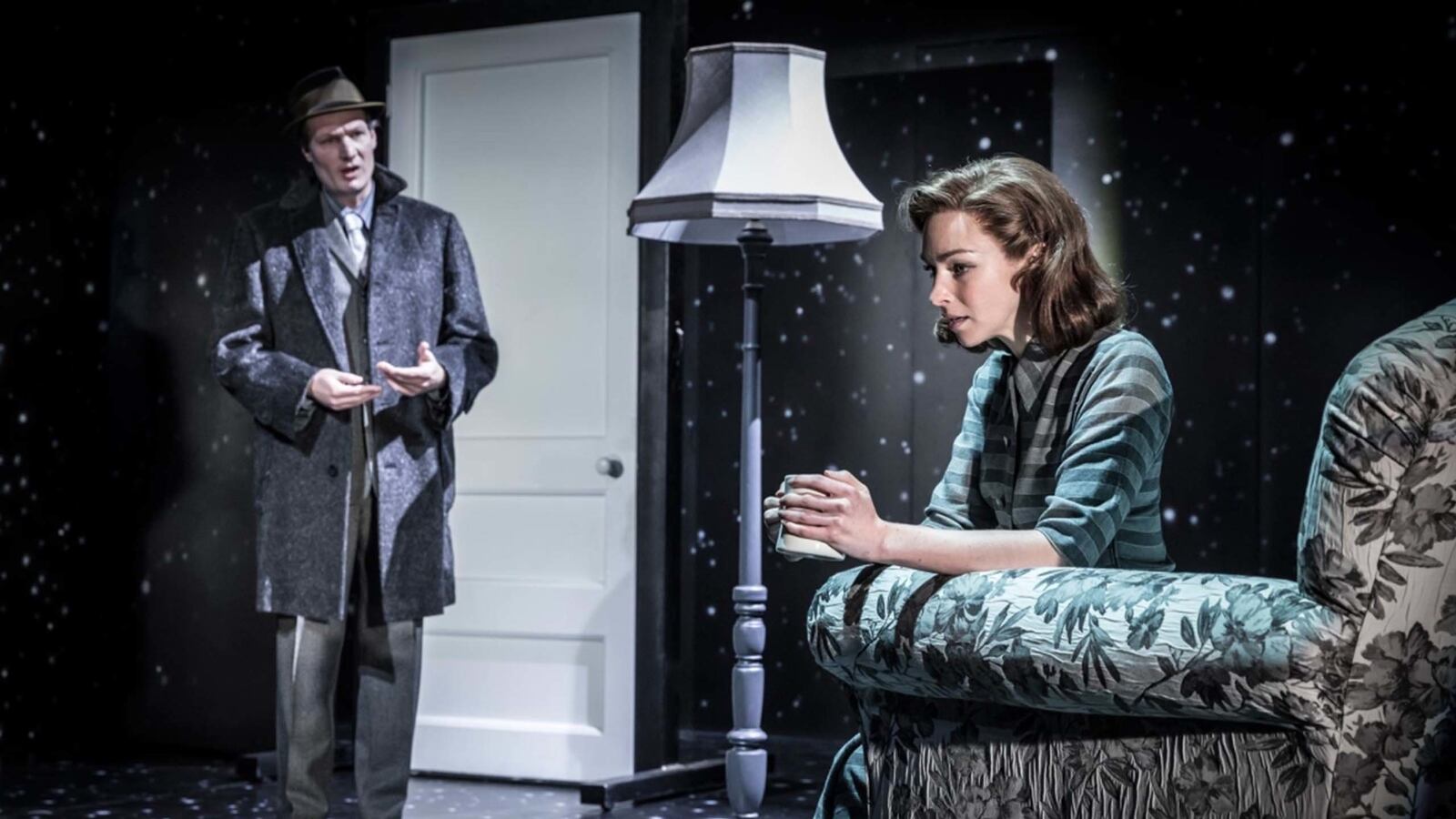The Twilight Zone, the CBS series that originally ran on television from 1959 to 1964, has been much repeated, reworked and adapted since then. It has been heard on radio, published as a series of short stories, turned into comic books, become both board and video games, seen on the big screen, even become Towers of Terror in Disney theme parks.
So unstoppable has it proved that you wouldn’t be the least surprised to find it transformed into the sort of shadow play, with puppets seen in silhouette behind a giant sheet, that’s called Nang Yai in Thailand.
Come to think of it, Nang Yai might be more entertainingly sinister than the new stage version of The Twilight Zone which, adapted by the American playwright Anne Washburn, has just opened at London’s Almeida Theatre.
It sometimes feels like period pastiche, a sort of sci-fi Rocky Horror Picture Show, and sometimes aspires to seem real and be alarming. And often it is marooned between those extremes. (It does not, it must be said, use too much of Marius Constant's famous theme tune.)
Anyway, the evening opens in stilted, self-mocking fashion in an Edward Hopper diner. There, a parody sheriff is ominously wondering why a bus, unable to get through a perilous bridge ahead, now contains seven passengers when it set out with six.
Has it, he gasps, been infiltrated by someone or something from outer space? And actually it has, as we discover later in the evening. Agatha Christie style, the most unexpected of the passengers turns out to be the alien, the only survivor when the bridge duly collapses with the bus on top.
Even greater oddities follow, but the acting of Richard Jones’ 10-person cast becomes less mannered while his production gets more confused and confusing. That’s partly because Ms. Washburn has taken eight of the 156 episodes that Rod Serling and his co-writers created and split up most of them.
Were there only two pilots in the spaceship that crash-landed in the desert? If so, who are they, given that a third man also claims to have been there? The conundrum recurs, interspersed by snatches from other stories, dizzying the mind rather more than it surely should.
After all, there’s enough without such narrative jerks, jumps and somersaults to suggest that our planet is a strange place. Strange, because so many improbable possibilities and impossible probabilities are ceaselessly assaulting our insensible sensibilities and illogical logic.
People meet what appear to be their younger selves. A distraught man refuses to obey his psychiatrist and go to sleep, so fearful is he of a nightmare haunted by a sexually avid woman. An astronaut falls haplessly in love before setting out for 52 years, three months, and 26 days on a space journey that turns out to be scientifically obsolete.
Cigarettes magically appear in the hands of people who don’t smoke. A ventriloquist’s dummy sups whisky while speaking in a voice that certainly isn’t the ventriloquist’s. Who is Herrington, who is Stansfield? Do those elusive gentlemen even exist?
Then again was I myself dreaming or, as one of many disconcerting lines in the show put it, was a dream dreaming me? It often felt that way, for instance in one of the more scattered episodes. To the horror of her parents, a girl enters the fourth dimension, seemingly through her bedroom wallpaper. She’ll be imprisoned there for ever, unless she makes contact with the family dog, which has also made this unconventional exit, and allows it to rescue her. Does it? It seems so, though nothing in Ms. Washburn’s vale of agonized screeches and stricken wails is remotely certain.
It comes as quite a relief when Oliver Alvin-Wilson, John Marquez, Lizzy Connolly, Amy Griffiths and the rest of Mr. Jones’ impressively versatile cast stop multiplying roles and settle into the one episode that’s allowed to take its course without fragmenting.
The president announces that nuclear missiles are about to hit the U.S., provoking one man and his family to bolt themselves into their tiny underground shelter while friends and neighbors clamor from the outside to join them.
That starts a quarrel in which suburbanites assert their best claims for survival. Who is the most deserving, which means the most American? Whose ancestors came to America first? Xenophobia escalates into racism—all until the missiles turn out to be harmless and the neighborhood reverts to a shoddy tranquillity.
That provocative item comes from the time when, thanks to Russian ships bringing rockets to Cuba, the cold war threatened to turn molten. As such, it has an impact the rest of Ms. Washburn’s miscellany can’t and doesn’t. Paul Steinberg’s set, which mainly consists of an antique television set hovering between black walls festooned with stars, suggests why.
This Twilight Zone doesn’t involve the socially or politically topical. It tries to evoke universal dreads, stir our imaginations, ask us to expect the unexpected, suggest we rethink our notions of reality, prepare us to accept that there’s more in heaven and earth than we dream of, and quietly insist that we take those dreams and fantasies more seriously than we do.
Does it achieve much of this? Sometimes, but occasionally, sporadically and never leaving our spines chilled.
The Twilight Zone is at the Almeida Theatre, London N1, until Jan. 27, 2018. Book tickets here.






